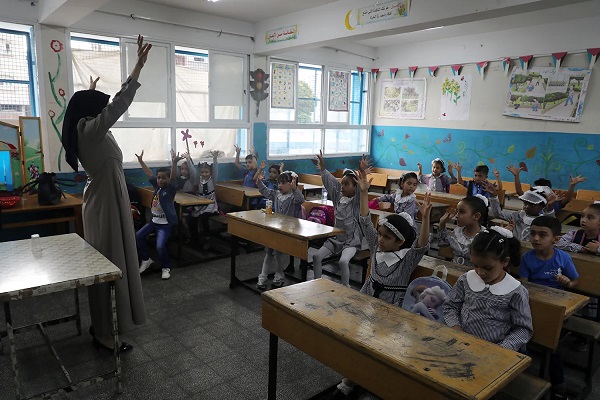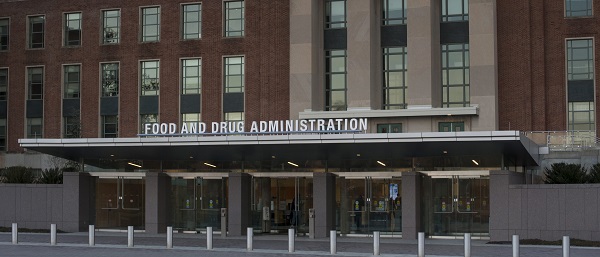Education
New Report Offers a Nuanced Perspective on Canada’s Indian Residential Schools

From the Frontier Centre for Public Policy
Positive stories about Indian Residential Schools must also be heard
The Frontier Centre for Public Policy is pleased to announce the release of a thought-provoking new report titled Positive Stories of Indian Residential Schools Must Also be Heard by Hymie Rubenstein and James C. McCrae. This report challenges the dominant narrative surrounding Canada’s Indian Residential Schools, advocating for a more balanced and comprehensive understanding of their historical legacy.
In Positive Stories of Indian Residential Schools Must Also be Heard, Rubenstein and McCrae critically examine the current portrayal of the residential school system, which is often overwhelmingly negative. The authors argue that this narrative fails to acknowledge the positive experiences of many former students and the genuine intentions of those who worked within the system. While not dismissing the testimonies of abuse, the report emphasizes that these accounts do not represent the full spectrum of experiences at the schools.
The report highlights several stories of individuals who credit their time in residential schools with shaping their successful futures. For instance, Len Marchand, Canada’s first status Indian member of parliament and a federal cabinet minister, attended the Kamloops (BC) Indian Residential School and spoke highly of the education he received there. In his memoir, Breaking Trail, he noted that his time at the school inspired his desire to help his people through education.
Similarly, Tomson Highway, a celebrated Canadian playwright and composer, described his years at Guy Hill Indian Residential School in Manitoba as “nine of the best years of my life.” His parents chose to send him to the school, believing it would provide better opportunities for their children. The skills Highway acquired, including classical piano, were instrumental in his later achievements.
Reverend Canon Stan Cuthand, an Indigenous Anglican priest who served as a chaplain at several residential schools, also offers a positive perspective. He recalled that the schools were not “terrible places” and praised the efforts of staff who worked to protect and nurture the children, even integrating Indigenous culture into the curriculum.
As students return to classrooms this fall, the topic of residential schools has taken a central role in many curricula across the country. However, there is concern that some teachers focus solely on the “horrors” of these institutions or even frame Canada as a genocidal state, leaving little room for a balanced discussion. This report urges educators to offer a more nuanced view that includes both the positive and negative aspects of the residential school system. Stories like those of Tomson Highway and Len Marchand demonstrate that not every experience was one of trauma, and some students went on to achieve remarkable success as a result of their education.
The report also touches on the experiences of Lea Meadows, whose mother, Elsie McLaren Meadows, had a positive experience at the Brandon (Manitoba) Indian Residential School. Inspired by her time there, Elsie became a teacher and later worked in similar schools. Meadows argues that it is unjust to label all who worked at these schools as abusers, recognizing that many were dedicated to the well-being and education of the children.
Moreover, the report cites instances where Indigenous communities themselves supported the continuation of residential schools. For example, in 1970, Alberta’s Saddle Lake First Nation residents successfully protested the closure of Blue Quills School, taking control of the institution themselves. Similarly, in 1971, eight Saskatchewan bands advocated for the Marieval Indian Residential School to remain open, emphasizing its importance for children from challenging home environments.
Positive Stories of Indian Residential Schools Must Also be Heard is a timely and significant contribution to the ongoing debate about the legacy of the residential school system. It encourages Canadians to consider all perspectives in the pursuit of truth and reconciliation, acknowledging both the positive and negative aspects of this complex history.
Download the backgrounder here. (10 pages)
About the Authors:
- Hymie Rubenstein is the editor of REAL Indigenous Report. A retired professor of anthropology, he served as a board member and taught for many years at St. Paul’s College, University of Manitoba, the only Roman Catholic higher education institution in Manitoba.
- James C. McCrae is a former attorney general of Manitoba and Canadian citizenship judge.
Alberta
Schools should go back to basics to mitigate effects of AI

From the Fraser Institute
Odds are, you can’t tell whether this sentence was written by AI. Schools across Canada face the same problem. And happily, some are finding simple solutions.
Manitoba’s Division Scolaire Franco-Manitobaine recently issued new guidelines for teachers, to only assign optional homework and reading in grades Kindergarten to six, and limit homework in grades seven to 12. The reason? The proliferation of generative artificial intelligence (AI) chatbots such as ChatGPT make it very difficult for teachers, juggling a heavy workload, to discern genuine student work from AI-generated text. In fact, according to Division superintendent Alain Laberge, “Most of the [after-school assignment] submissions, we find, are coming from AI, to be quite honest.”
This problem isn’t limited to Manitoba, of course.
Two provincial doors down, in Alberta, new data analysis revealed that high school report card grades are rising while scores on provincewide assessments are not—particularly since 2022, the year ChatGPT was released. Report cards account for take-home work, while standardized tests are written in person, in the presence of teaching staff.
Specifically, from 2016 to 2019, the average standardized test score in Alberta across a range of subjects was 64 while the report card grade was 73.3—or 9.3 percentage points higher). From 2022 and 2024, the gap increased to 12.5 percentage points. (Data for 2020 and 2021 are unavailable due to COVID school closures.)
In lieu of take-home work, the Division Scolaire Franco-Manitobaine recommends nightly reading for students, which is a great idea. Having students read nightly doesn’t cost schools a dime but it’s strongly associated with improving academic outcomes.
According to a Programme for International Student Assessment (PISA) analysis of 174,000 student scores across 32 countries, the connection between daily reading and literacy was “moderately strong and meaningful,” and reading engagement affects reading achievement more than the socioeconomic status, gender or family structure of students.
All of this points to an undeniable shift in education—that is, teachers are losing a once-valuable tool (homework) and shifting more work back into the classroom. And while new technologies will continue to change the education landscape in heretofore unknown ways, one time-tested winning strategy is to go back to basics.
And some of “the basics” have slipped rapidly away. Some college students in elite universities arrive on campus never having read an entire book. Many university professors bemoan the newfound inability of students to write essays or deconstruct basic story components. Canada’s average PISA scores—a test of 15-year-olds in math, reading and science—have plummeted. In math, student test scores have dropped 35 points—the PISA equivalent of nearly two years of lost learning—in the last two decades. In reading, students have fallen about one year behind while science scores dropped moderately.
The decline in Canadian student achievement predates the widespread access of generative AI, but AI complicates the problem. Again, the solution needn’t be costly or complicated. There’s a reason why many tech CEOs famously send their children to screen-free schools. If technology is too tempting, in or outside of class, students should write with a pencil and paper. If ChatGPT is too hard to detect (and we know it is, because even AI often can’t accurately detect AI), in-class essays and assignments make sense.
And crucially, standardized tests provide the most reliable equitable measure of student progress, and if properly monitored, they’re AI-proof. Yet standardized testing is on the wane in Canada, thanks to long-standing attacks from teacher unions and other opponents, and despite broad support from parents. Now more than ever, parents and educators require reliable data to access the ability of students. Standardized testing varies widely among the provinces, but parents in every province should demand a strong standardized testing regime.
AI may be here to stay and it may play a large role in the future of education. But if schools deprive students of the ability to read books, structure clear sentences, correspond organically with other humans and complete their own work, they will do students no favours. The best way to ensure kids are “future ready”—to borrow a phrase oft-used to justify seesawing educational tech trends—is to school them in the basics.
Business
Why Does Canada “Lead” the World in Funding Racist Indoctrination?
-

 Alberta2 days ago
Alberta2 days agoOttawa-Alberta agreement may produce oligopoly in the oilsands
-

 Energy2 days ago
Energy2 days agoThe Top News Stories That Shaped Canadian Energy in 2025 and Will Continue to Shape Canadian Energy in 2026
-

 Energy2 days ago
Energy2 days agoWestern Canada’s supply chain for Santa Claus
-

 International2 days ago
International2 days ago$2.6 million raised for man who wrestled shotgun from Bondi Beach terrorist
-

 Frontier Centre for Public Policy17 hours ago
Frontier Centre for Public Policy17 hours agoTent Cities Were Rare Five Years Ago. Now They’re Everywhere
-

 armed forces18 hours ago
armed forces18 hours agoRemembering Afghanistan and the sacrifices of our military families
-

 Fraser Institute18 hours ago
Fraser Institute18 hours agoHow to talk about housing at the holiday dinner table
-

 Fraser Institute3 hours ago
Fraser Institute3 hours agoCarney government sowing seeds for corruption in Ottawa















